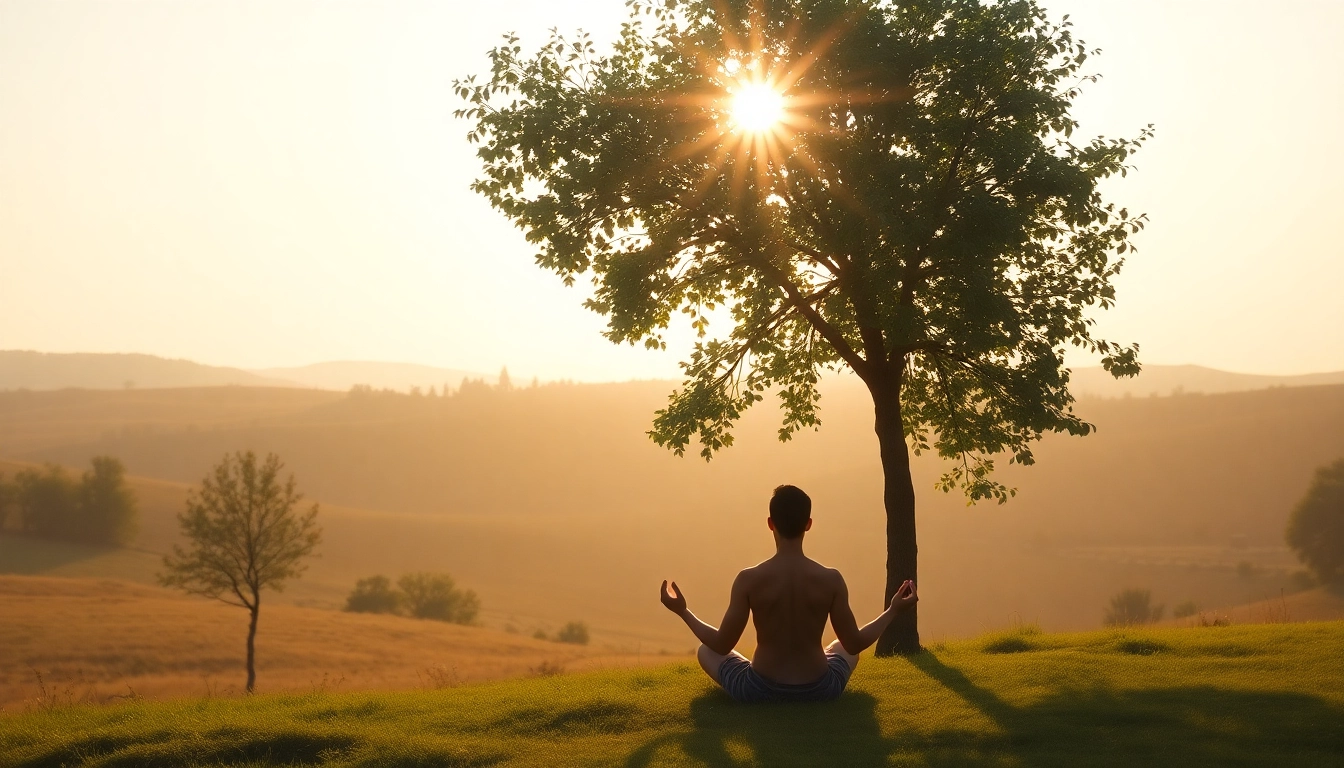Understanding Relaxation
In today’s fast-paced world, the concept of relaxation is often overshadowed by hustle and bustle, leaving many struggling to find moments of peace. To truly relax is not merely to rest; it encompasses a deeper state of mental and physical calm that transcends just a temporary pause in activity. Understanding what it means to relax, recognizing its benefits, and identifying the barriers to achieving true relaxation can form the foundation for adopting effective relaxation techniques.
What Does It Mean to Relax?
To relax means to become less tense or rigid. According to definitions from established language dictionaries, relaxation is a state where muscles are looser and tension is diminished. It can be both a physical and a psychological condition where stress is alleviated, and the individual can just ‘be’ without pressure. This can manifest as an emotional coolness or serenity—a state where worries hold less sway.
Bronnie Ware, an Australian nurse who recorded the regrets of the dying, noted that many individuals wish they had allowed themselves to be happier and to relax more. This insight emphasizes that relaxation is critical for emotional well-being and should be prioritized in our lives.
The Benefits of Relaxing
Engaging in regular relaxation can have profound effects on both body and mind:
- Physical Benefits: Reduction of muscle tension, lowering blood pressure, enhancing circulation, and even improving sleep quality.
- Mental Health Benefits: Decrease in anxiety and depression, enhancement of cognitive function, and improved focus.
- Emotional Stability: Facilitates the management of stress and emotional resilience, leading to a more fulfilling life.
- Spiritual Clarity: Aids in connecting with oneself, fostering greater self-awareness and mindfulness.
Common Barriers to Relaxation
Despite the benefits, various barriers can impede our ability to relax:
- Stressful Environments: A chaotic setting filled with noise and visual disarray can stifle relaxation efforts.
- Mindset: A constantly racing mind, fear of missing out on duties, or a task-oriented mentality can hinder your capacity to relax.
- External Pressures: Societal expectations and responsibilities can create a false sense of urgency that pushes relaxation to the backburner.
- Physical Discomfort: Chronic pain or discomfort can be distracting and make it difficult to reach a relaxed state.
Effective Relaxation Techniques
With knowledge of the benefits and barriers surrounding relaxation, it is vital to implement effective techniques that help foster a sense of calm. The following methods have been employed successfully by many individuals and can be adapted to suit various preferences and lifestyles.
Breathing Exercises for Relaxation
Breathing exercises are foundational practices for relaxation, as they can quickly induce calm and serenity. Here are several techniques to try:
- Deep Breathing: Sit or lie down comfortably. Take a deep breath through your nose, allowing your abdomen to rise. Exhale slowly through your mouth. Repeat several times.
- 4-7-8 Technique: Inhale for 4 seconds, hold the breath for 7 seconds, and exhale slowly for 8 seconds. This technique helps slow down the heart rate and build a sense of calm.
- Box Breathing: Inspired by the techniques used by athletes and the military. Inhale for 4 seconds, hold for 4 seconds, exhale for 4 seconds, and hold for another 4 seconds. This method can effectively manage stress in high-pressure situations.
Guided Meditation for Inner Peace
Guided meditation presents another powerful avenue for relaxation. Many apps and online platforms offer guided sessions ranging from minutes to hours:
- Mindfulness Meditation: Emphasizes present-moment awareness, allowing thoughts to come and go without judgment.
- Visualization Techniques: Involve imagining a serene environment, engaging all senses to deepen the experience of tranquility.
- Loving-Kindness Meditation: Focuses on developing capacity for love and connection, which can diminish feelings of isolation and anxiety.
Engaging in guided meditation daily, even for just a few minutes, can lead to lasting changes in mental and emotional health.
Creative Activities to Unwind
Artistic endeavors are excellent ways to relax, as they promote mindfulness and offer an escape from daily worries:
- Painting and Drawing: Even if you are not experienced, expressive arts can serve as an emotional release.
- Dancing or Movement: Engaging in physical body movement allows pent-up emotions to be released and fosters joy.
- Journaling: Writing about your thoughts and feelings can clarify emotions and give you a renewed perspective on your daily challenges.
By shifting focus onto creative activities, participants not only unwind but also discover new outlets for emotional expression.
Creating a Relaxing Environment
Beyond techniques, the environment in which you practice relaxation can significantly impact its effectiveness. Creating an inviting space for calmness is essential:
Setting Up Your Space for Serenity
When preparing to relax, assess your surroundings:
- Declutter: A clean space minimizes distractions and creates an atmosphere conducive to relaxation.
- Comfortable Seating: Invest in comfortable cushions or chairs that encourage long periods of relaxation.
- Add Greenery: Plants can instill a sense of tranquility and improve air quality in your space.
Choosing the Right Sounds and Scents
The auditory and olfactory environments play a powerful role in relaxation experiences:
- Nature Sounds: The sound of flowing water, bird songs, or rustling leaves can help ground you and promote peace.
- Soothing Music: Soft instrumental music or ambient tracks can create a calm atmosphere.
- Aromatherapy: Essential oils like lavender, chamomile, or sandalwood can enhance relaxation and reduce anxiety when diffused into the air.
Lighting and Decor for Calmness
Lighting can dramatically affect mood, so consider soft lighting options such as:
- Candlelight: The flickering glow of candles provides a warm ambiance.
- Dimmer Switches: Allow control over brightness and help create a personalized setting.
- Soothing Color Palettes: Use soft hues in decoration—blues, greens, and pastels are known to evoke calmness.
Maintaining Regular Relaxation Practices
While establishing initial relaxation techniques is vital, consistency is key to reaping the long-term benefits of relaxation:
Incorporating Relaxation into Your Daily Routine
Making relaxation a part of your daily routine can prevent stress and contribute to overall well-being. Consider these strategies:
- Set a Daily Time: Choose a specific time daily for your relaxation practice. Ritualizing this activity can signal to your mind and body that it is time for rest.
- Mix Techniques: Use a combination of meditation, breathwork, and creative activities to keep your practice dynamic and engaging.
- Limit Distractions: Inform those around you about your relaxation times, and consider silencing notifications to immerse fully in the experience.
Tracking Your Relaxation Progress
Keeping a record of your relaxation journey can illuminate areas of improvement:
- Journaling: Reflect on your feelings before and after relaxation sessions can help you notice patterns or areas to adjust.
- Tracking Tools: Utilize apps designed for mindfulness and relaxation to set goals and track accomplishments.
- Regular Reviews: Set weekly or monthly assessments to evaluate your emotional and physical well-being related to relaxation practices.
Adjusting Techniques Based on Your Needs
As life evolves, so too may your relaxation techniques:
- Revisit Techniques: Be open to trying new methods or altering existing practices as your lifestyle or needs change.
- Listen to Your Body: Pay attention to physical sensations or emotional responses to relaxation techniques and fine-tune as necessary.
- Get Feedback: Engage with trusted friends or professional advisors who can provide insights based on your relaxation journey.
Overcoming Stress to Find Relaxation
Stress and relaxation can easily become a tug-of-war; overcoming stress is essential for experiencing relaxation fully. Identifying what causes stress can be the first step.
Identifying Sources of Stress
Self-awareness is paramount. Here are approaches to identify your stressors:
- Keep a Stress Diary: Document moments of elevated stress and reflect on common threads to uncover triggers.
- Speak with Loved Ones: Conversations can help you articulate feelings and identify patterns of stress.
- Professional Guidance: Seek the advice of a therapist to gain insights into recurring stressors in your life.
Techniques to Manage Stress Effectively
Once you recognize your stressors, try specific techniques to manage them:
- Proactive Planning: Anticipate stressful situations and develop strategies to face them.
- Regular Physical Activity: Exercise is a scientifically-proven method for reducing stress and releasing endorphins.
- Social Support: Engage with your support network. Isolation can exacerbate stress, while connection can alleviate it.
When to Seek Professional Help
Sometimes, self-help techniques may not suffice. If you experience persistent feelings of stress, anxiety, or depression, consider reaching out to a professional. Warning signs can include:
- Inability to relax despite attempts
- Withdrawal from social activities
- Physical symptoms such as fatigue or chronic pain
- Changes in sleep or appetite
Seeking help is a sign of strength and can lead to more effective coping strategies and a greater sense of well-being.


